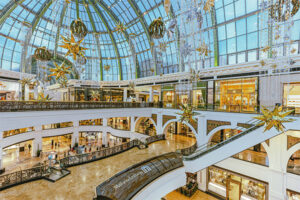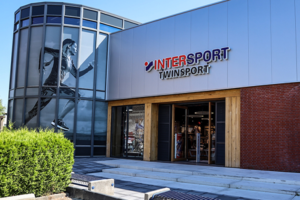BY JORGE MORGADINHO
In mature geographies with a high level of competition such as the European market, consumers are increasingly searching for challenges and enticements that match the new trends they see, yearn for, and experience by means of all the different new tools available to them. This compels shopping center operators to study and identify all the international trends, not only within the sector but also outside it, that may be adopted in order to obtain better results and consequently higher returns on their assets.
Among all this, we are faced with the plot of land, which, by its very nature, is not conducive to constant changes like those that can easily be made in the commercial or marketing mix. This is why the process of thinking, designing, and building the asset is key. It must achieve a modern shopping center ambiance with an appearance that can stand the test of time and with interiors that are geared towards energy savings and the creation of new experiences for visitors. At the same time, it must also offer the flexibility to make sensible conceptual design changes to adapt its interior and exterior solutions to fast-paced, ever-changing trends.
It is not easy to identify international trends and properly apply them to each of the assets in a certain country, however. Every country has its own peculiarities on both national and regional levels, with the type of visitors strongly related to the culture of the European country where they live. For all that, we are able to identify some areas that enable us to determine broad aspects that can be developed or adapted in the shopping centers of the future. And the future is now. It is better to act than just to react.
One of the most successful trends at present is integrated projects, wherein shopping centers are key elements of a larger mixed-use complex that includes residences, offices, hotels, and other types of services. There is still great growth potential here. Shopping centers have a great responsibility in these projects, as they form the shopping and leisure hub, a place for gathering and socializing, for an extensive area with thousands of inhabitants living in one place. These types of developments have the advantage of being perfectly integrated into their cities and easily reachable, quickly becoming a part of families’ everyday lives.
Another key success factor for sustainable shopping centers of the future is a greater bet on leisure areas, with food court gourmet areas that are innovative, very cozy, well integrated, and consistent with the center’s culinary offerings. They should be as similar as possible to the comfort of our own homes and designed together, or even merged with, areas dedicated exclusively to leisure activities suitable for all ages, not just for families with children, but also for the elderly, as Europe’s population is ageing. Shopping centers are taking giant steps towards a model of space integrated into the daily lives of all visitors, meeting their social, shopping, culinary, beauty, relaxation, entertainment, and leisure needs, as well as many others that will largely depend on what each shopping center has to offer.
Finally, I would also like to highlight the importance of sustainability in designing a shopping center, from business, operational, and physical perspectives. It is crucial to choose the right materials and make design choices to make the most of natural light. This has a positive impact on both the center’s energy consumption and the visitors’ well-being while inside the building. At the same time, installing and integrating lots of landscape vegetation—preferably something that requires low water consumption—is a highly important decorative element for a shopping center and plays a key role in architectural design. It bestows interiors with their own distinctive personality and creates a friendly environment for visitors, bringing a sense of the outdoors inside such spaces.
The trends for shopping centers in terms of architecture are ever-changing and vary from place to place. Getting them right when creating, designing, and building a new asset is no easy task, and it requires an open mind and a strong awareness of the varying lifestyles that different types of people appreciate and nurture in a single place they choose to visit.
Observing trends is very important, as these represent the majority feeling or behavior of many people. Creative processes can create trends on their own as well, however. Centers can thus benefit from existing external factors and internal motivation, innovation, and creativity. Shopping Centers must always be challenging, provocative, appealing, and kind to their visitors.
What is your opinion on this topic? Discuss it with us! Send your opinion to opinion@across-magazine.com






![Titel_Across_1_24_Endversion[111270] Titel_Across_1_24_Endversion[111270]](https://www.across-magazine.com/wp-content/uploads/elementor/thumbs/Titel_Across_1_24_Endversion111270-qjpg2yp7x6msxzo90wpo62uop32tmjtjils84ezryg.jpg)
